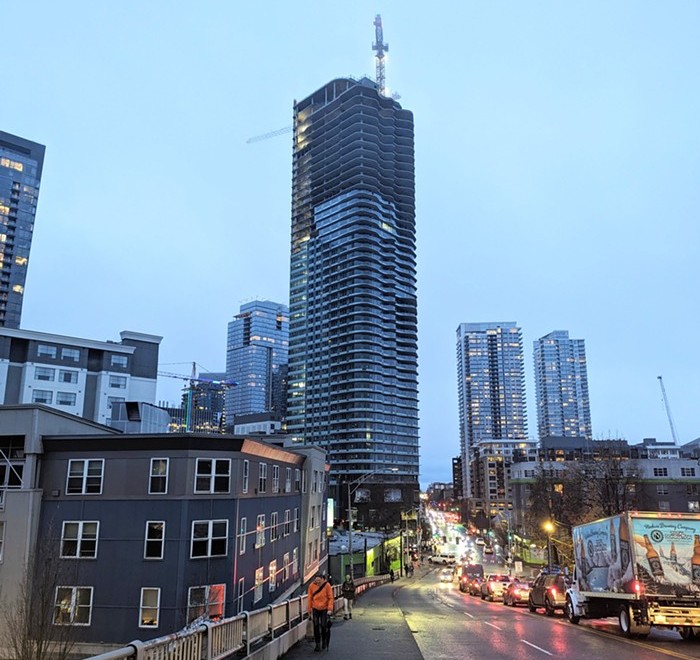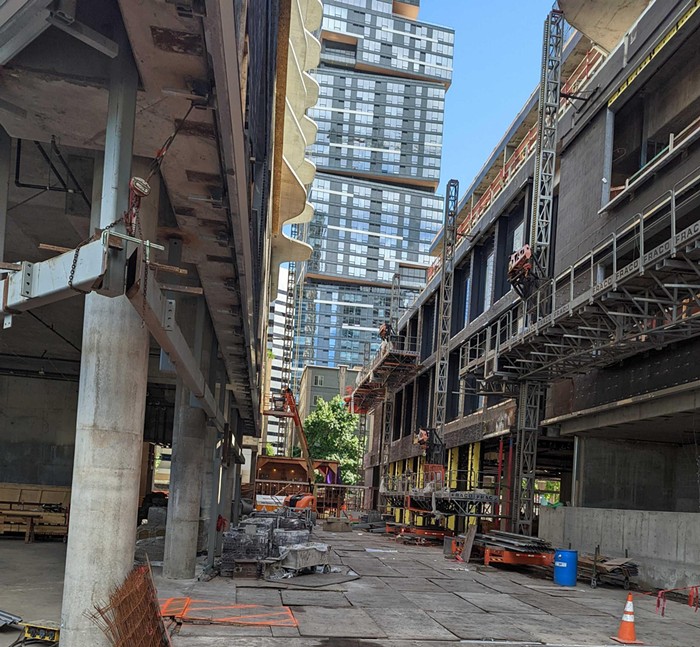
Seattle is not a tourist machine. There is nothing to really see here. It's architecturally unimpressive (Portland does a better job of that), and its urbanism is pretty primitive, when compared to that of Vancouver BC. When we are not constructing bland apartments and office buildings, we are left with the sorry and repetitive "language of the bungalow," to use the words of the architect Joshua Prince-Ramus.
Indeed, there is so little see here that a wall studded with chewed gum is considered a tourist attraction (and to make matters worse, it is one of the most beautiful walls in the city). So, what kind of machine is Seattle? It was once a living machine, and not a very bad one, as its weather was mild (a real advantage for readers like me—readers hate weather), and it had lots of parks and bodies of water. This is the city that Nicole Brodeur, the Seattle Times columnist, declares is over in her story "'Seattle is dead': Mourning the potential loss of Black Dog Forge, Pearl Jam’s birthplace." The building that houses "the birthplace" of the world-famous grunge band is up for sale. Brodeur knows that when the property is sold it will be replaced by an apartment building that's designed with little to no imagination, and one that only a few people can afford to live in. These people will have no idea that they are residing on the sacred ground of rock history.
As her column was posted this morning, news came from Wall Street that Amazon—the giant online retail corporation that threatens to send America's service economy (which replaced the industrial economy in early 1980s) into decline with automation—reached $1,000 per share. Amazon now has an astonishing market valuation of half a trillion dollars, which is "double that of the [brick-and-mortar] rival Wal-Mart and more than 15 times the size of Target."
Combine the irrational exuberance that inflated the company's value with the financialization of the housing market (which only increased after the crash of 2008 and which is open to flows of global and national capital in search of high yield and safe bets), and you end up with the kind of machine we have today: the city as a money machine.
The departure of black Seattle in the 1990s marked the beginning of the end of the living machine. And so we see that gentrification, in the case of this city, was the transitional stage to money urbanism. If anyone comes here, it's not for the views of the volcano, or the bay, or its history. It's for money. In fact, some houses are bought in this city without ever being seen. You do not need to see money.
The important thing to keep in mind in all of this is: one, a city can be a living machine and prosperous at the same time; and, two—as it relates to the Amazonization of the economy—it's not automation that is bad; it's the fact that free time is not cheap.















